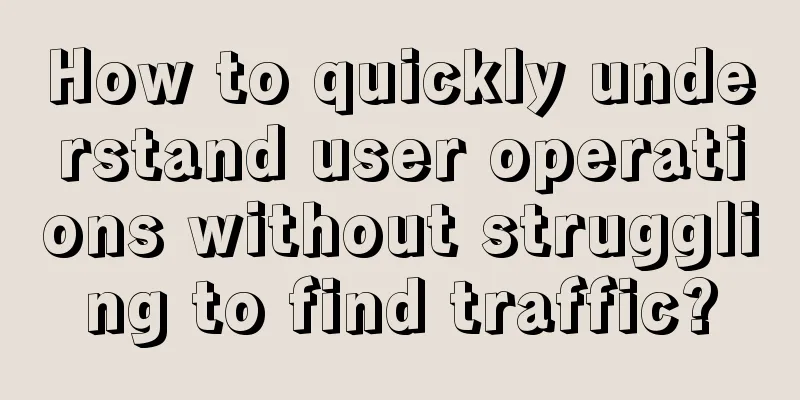What kind of training do astronauts need to do in order to “take a few steps” in space?

|
At 21:35 on December 21, after about 7.5 hours of extravehicular activities, the Shenzhou 17 astronaut crew, with the support of the space station's robotic arm and ground researchers, completed the scheduled tasks such as the solar wing repair test of the Tianhe core module. Astronauts Tang Hongbo and Tang Shengjie returned safely to the Wentian laboratory module, and the extravehicular activities were a complete success. Astronaut Tang Hongbo walked in space again after two years, and astronaut Tang Shengjie became the youngest astronaut in my country to perform an extravehicular mission. Astronauts Tang Hongbo and Tang Shengjie perform extravehicular mission Spacewalk, together with manned round-trip between the earth and the sky and rendezvous and docking, is known as one of the three basic technologies of manned space flight. It plays a unique and important role in the development of manned space flight, especially in missions such as building space stations, conducting space maintenance and repair, and space rescue. Let us take a closer look at “space walking”. What is a spacewalk? Is it just a walk in space? Spacewalk refers to the extravehicular activities of astronauts. Extravehicular activities are a general term for a series of processes in which astronauts leave manned spacecraft or bases built on other celestial bodies, rely on their own life support systems, work and move in space or on the surface of other celestial bodies, and then return to the manned spacecraft or base. Manned spacecraft here include spacecraft, space shuttles, space stations and lunar modules. The space station operates in space for a long time, providing an important scientific research and experimental site for humans. However, the space station is huge in scale and complex in structure, and cannot be launched directly into space by rockets. Instead, the various components and equipment can only be launched one by one and then assembled in space, which requires astronauts to perform extravehicular operations. The extravehicular activities of Liu Boming and Tang Hongbo, which completed tasks such as assembling relevant equipment and raising the panoramic camera, belong to this category of activities. On-orbit maintenance of spacecraft is an important task of extravehicular activities. The development and launch of satellites, spacecraft and space stations require a lot of money. After entering orbit, they begin to face various safety risks, such as equipment failure and instrument failure. Sometimes a piece of space debris of a few centimeters can destroy a spacecraft worth tens of millions. In many cases, only a few parts need to be replaced to bring the spacecraft back to life and continue to work. Chinese astronauts leave space In the era of the US space shuttle, astronauts had to perform maintenance tasks during every flight mission. In 1990, after the Hubble telescope, which was worth $1.5 billion, was launched into space, its performance declined due to a malfunction. After 7 spacewalks and nearly 50 hours of on-orbit maintenance, the astronauts successfully allowed it to continue to work with a longer life and good accuracy. The construction of the International Space Station started in 1998, with a design life of 10 to 15 years. Thanks to the hard work of the astronauts, it has been running smoothly to this day. Manned spaceflight is very risky. When a manned spacecraft has a serious malfunction in space, astronauts need to detach from the malfunctioning spacecraft and enter another vehicle by spacewalk, or perform space rescue for other astronauts in this way. In the future, when humans land on the moon, the mission of spacewalk will be greatly expanded and even become a normal job to promote important tasks such as the construction of a lunar base, resource exploration and mining, and scientific investigation. Want to go to space? You need to pass these four levels first Spacewalk is one of the most dangerous tasks in space activities. Astronauts leave the protection of the spacecraft and go into the vast space alone, floating in orbit at a speed of nearly 8 kilometers per second, facing the test of the harsh space environment such as vacuum, strong radiation, weightlessness and sudden cold and hot alternation. Astronauts walking in space, moving their bodies In a vacuum environment, if astronauts lose effective protection, they will lose consciousness due to lack of oxygen within 15 seconds and die within 30 seconds. Due to the lack of atmospheric pressure, the blood and body fluids of the human body will "boil" like boiling water, and the skin, tissues and organs will expand outwards. There is no barrier of the Earth's atmosphere and magnetic field in space, and astronauts will be directly exposed to various cosmic radiations, including solar rays ejected during solar flares, high-energy particles from the Milky Way, and non-ionizing radiations such as ultraviolet rays, infrared rays, and radio frequency radiation. These radiations can cause varying degrees of harm to the human body. If they exceed the safety limit, astronauts will suffer from radiation sickness or even be life-threatening. In the weightless environment of space, astronauts will suffer from vestibular dysfunction, resulting in dizziness, nausea, vomiting and other "space motion sickness". Long-term weightlessness will increase the excretion of inorganic salts such as calcium, phosphorus and magnesium in the human body, causing osteoporosis and muscle atrophy. There is no air in space, convection disappears, and the temperature changes dramatically. The space station orbits the earth in 90 minutes, half of the time it is exposed to the sun and the other half is blocked by the earth. The temperature exceeds 100℃ when it is exposed and drops to -100℃ when it is blocked. In this extreme environment of sudden cold and heat, astronauts' continuous spacewalks for several hours are a great test of their physical and mental health. Astronauts need to face four levels of the space environment during a spacewalk, and the extravehicular spacesuit is the ultimate guarantee for meeting the tests. The extravehicular space suit consists of clothing, helmet, gloves and space boots, among which the most complicated is the clothing, which has 6 layers from inside to outside. The innermost layer is the lining and urine collection device, followed by the liquid cooling ventilation layer for heat dissipation; the third and fourth layers are respectively the pressurized airtight layer to maintain the pressure inside the space suit and the restricting layer to limit the outward expansion of the pressurized airtight layer; the fifth layer is the thermal insulation layer to cope with the extreme temperature difference outside the cabin, and the outermost layer is the protective layer, which is made of a variety of fiber composite fabrics, has good softness, and is resistant to penetration, wear, high temperature, combustion, corrosion, and radiation, and has other equipment interfaces. Astronauts wearing extravehicular space suits In addition, the extravehicular space suit provides an independent backpack-type life support system, gas, liquid and electrical support system, measurement and control, and communication equipment, and can be said to be a most miniature spacecraft. my country's "Feitian" extravehicular space suit weighs more than 100 kilograms and uses a fully digital electronic control system. It can support astronauts' long-term extravehicular activities and multiple reuse. It has high overall efficiency and is more reliable and comfortable, providing the most reliable protection for astronauts' space walks. What preparations do astronauts need to make before a spacewalk ? Before a spacewalk, the preparations for going out of the cabin are also very complicated. Astronauts need to operate hundreds of devices, which places high demands on professional knowledge and operating skills. Astronauts must be familiar with the shape, location, operation method, operation essentials and related actions of any device. They need to prepare for many days before going out of the cabin, and several hours in advance on the day of going out of the cabin. During the extravehicular activities, the two astronauts first put on their extravehicular suits, carried out system checks on the extravehicular suits and the docking system of the extravehicular suits, and then "drilled" into the suits to adjust the size, check the airtightness and conduct full performance tests to ensure that everything was normal. During the "dressing" process, the two astronauts cooperated with each other, one operated while the other read the operation manual to confirm, to ensure that all steps were foolproof. Preparation before leaving the cabin The second step is to conduct on-orbit training. After putting on the extravehicular suit, astronauts must move and perform various simulated operations to experience the characteristics of movement and operation in a weightless state. Although there are neutral buoyancy tanks on the ground to provide weightlessness training, there is still a big gap with the real space environment. At the same time, astronauts must find the position to open the cabin door and the footholds for their hands and feet. During the on-orbit training, astronauts must rehearse the entire on-orbit preparation and extravehicular activities to further familiarize themselves with the extravehicular procedures, but the amount of exercise should not be too much to prevent space motion sickness. After these tasks are completed, the astronauts will rest for a period of time. Finally, there is the procedure of passing through the airlock and opening the door. Astronauts enter and exit the space station through the airlock, which has two doors, one is the inner door connected to the manned cabin, and the other is the outer door leading to the outer space. After the astronauts enter the airlock, they close the inner door, pressurize the extravehicular suit, and breathe oxygen and expel nitrogen at the same time to avoid decompression sickness. The airlock slowly depressurizes, and when it is depressurized to 3 kilopascals, the gas-liquid combination connector of the extravehicular suit and the spacecraft is disconnected, and the suit switches to fully autonomous oxygen supply and cooling. When the air pressure drops to about 1 kPa, the outer door can be opened. When opening the door, unlock it first, wait until the pressure inside and outside the cabin is balanced, and then open the door completely. Before leaving the cabin, the astronauts also need to cover the door with a protective cover to avoid scratches when entering and leaving the cabin. During this process, the astronauts always use one hand to stabilize their bodies and complete all actions with only one hand. After several hours of preparation, the astronauts successfully opened the outer cabin door and officially started extravehicular activities. Why isn't spacewalking just freely traveling in space? When astronauts go out of the cabin to conduct a spacewalk, they are strictly governed by the laws of physics. This is an extremely dangerous job. If they are not careful, they will be hurled into space by the space station. A complete set of actions and technical specifications need to be followed. According to calculations by experts at home and abroad and the experience of the International Space Station, after leaving the spacecraft, astronauts will maintain several different relative motion trajectories with the space station (related to the point of leaving the spacecraft), and the astronauts' motion trajectory is usually elliptical. The force and angle used by astronauts when leaving the spacecraft will affect their trajectory during "space flight". If the force and angle are slightly deviated, they will fall into space, so astronauts must have a wealth of physics knowledge and undergo thousands of trainings before they can conduct spacewalks. When doing extravehicular activities, astronauts must fasten safety ropes. As they are in a state of weightlessness, they cannot walk with their feet, so they have to move their bodies with their hands, robotic arms or manned maneuvering devices. To facilitate the movement of astronauts, handrails are specially installed outside the space station cabin, so astronauts can move their bodies like rock climbing, which requires good arm and physical strength. Usually, when two astronauts leave the spacecraft, one uses the traditional method of moving with the help of the handrail outside the space station, while the other uses the help of the robotic arm. At the same time, the subsystems of the ground control center work closely together to establish communication connections through the Tianlian series of satellites, providing high-speed voice and image relay services for the ground to observe the astronauts' status outside the spacecraft in real time and for the astronauts to communicate with the ground. In order to ensure the safety of astronauts' spacewalks, the best time for extravehicular activities must be chosen, which is the extravehicular window. The time selection should take into account the safety of people and equipment, and should be arranged in the sunlit area as much as possible. When the space station is in low-Earth orbit, it crosses the South Atlantic Anomaly many times. The abnormal radiation in this area has an impact on electronic equipment and instruments, and is also very harmful to the human body. Therefore, extravehicular activities must be arranged to avoid this area. What kind of training do astronauts do in order to “take a few steps” in space? In order to successfully complete the EVA mission, astronauts must also undergo EVA and EVA maintenance training, which includes both conventional training programs such as basic theory training, physical training, psychological training, and professional technical training, as well as high-difficulty training programs that challenge physiological limits, such as EVA procedure training, weightlessness training, low-pressure cabin training, and EVA mission training. EVA training is the most important and comprehensive training item in astronauts' EVA training. It is carried out on the basis of astronauts' mastery of theoretical knowledge and professional skills, and is conducted in a special equipment - an EVA simulator with an airlock. Astronauts wear training space suits to simulate the EVA process and operation characteristics. There are many training items for extravehicular procedures, which basically cover the entire work procedures from preparation for extravehicular activities to returning after the end of the extravehicular activities and tidying up the extravehicular suits. They include opening and closing inner and outer doors, checking extravehicular suits and airlocks, flushing extravehicular suits with high-flow oxygen, breathing oxygen and expelling nitrogen, entering space suits, depressurizing and repressurizing airlocks, and other training items. Astronauts' extravehicular activities mainly include maintenance, troubleshooting, assembly of space stations, deployment and recovery of spacecraft, etc., which require very high working ability and operational accuracy of astronauts in a weightless state. Most of this training is conducted in a simulated weightlessness tank, which consists of a tank, a water treatment system, a human physiological parameter monitoring system, a high-pressure gas source system, and life-saving and medical rescue equipment. The water quality must meet drinking water standards, the water depth is 10 to 15 meters, and there is a space station airlock cabin of the same size as the actual one. During training, astronauts wear training extravehicular suits and enter the water. By adjusting the weight and floatation device on the extravehicular suit, the buoyancy and gravity of the astronauts in the water are equal, so that they can float in the water. At this time, the astronauts are in a state of weightlessness, which is very similar to the feeling of weightlessness in space. Through a large number of repeated training, they can master the laws of movement in a weightless state and the methods and techniques of space operations. Astronauts conduct underwater training However, this method cannot completely restore the weightless environment. On the one hand, the human body's physiological reactions are still in a gravity environment. On the other hand, the resistance of water during underwater movement is quite different from that of a weightless state. Therefore, astronauts must carry out adaptive training after entering space. Vacuum and low-pressure environment training is conducted in a special test equipment low-pressure cabin. The low-pressure cabin can simulate most of the space environment except weightlessness, including vacuum, low pressure, cold and heat and radiation environment. Astronauts can train in a state close to actual combat, and truly experience the process of breathing oxygen and nitrogen, flushing the extravehicular suit with oxygen, depressurizing and repressurizing the airlock, etc., and wear extravehicular suits in a relatively realistic environment to carry out operation training and fault handling training, such as space suit power failure, ventilation failure, temperature control failure, space suit leakage, and extravehicular suit ventilation, temperature control, instrument monitoring, etc. |
<<: Are young people wearing military coats and flowered cotton jackets abandoning fashion?
Recommend
Featured | How do major brands write Father’s Day copy?
Father's Day, as the name suggests, is a holi...
Baidu promotion video information flow advertising display style - Feed post-patch
Information flow advertising style - Post-feed pa...
Tencent practical case! Review of QQ dream expression design
The deep integration of "Internet + charity&...
What does WeChat tap mean? How to take photos of others, friends and other people on WeChat
As the demand continues to rise, the functions of...
Liu Zhanwen | Standing tall and shouldering the mission of intelligent transportation Fu Fanghua
As a female young scientist born in the 1980s who...
Apple pushes the first public beta update of iOS/iPadOS 15
July 1 news Apple today released the first Beta v...
CATL's profit margins are declining, automakers are in arrears, and its financial situation is deteriorating
Previously, CATL benefited from generous policy s...
Refined operation model, taught you step by step!
In this article, we will talk about how to review...
Using two cases, analyze how UI designers can avoid user dissatisfaction and confusion
Our products often bring some negative feelings a...
Android's latest version distribution: 4.4 KitKat is unstoppable
Google today announced the latest distribution of...
The latest news on Shanghai’s full lifting of lockdown in 2022: Can it be lifted during the Dragon Boat Festival?
On May 17, Shanghai announced that the entire cit...
Both are important cell resources. What are the similarities and differences between stem cells and immune cells?
There exists a human health guardian corps in our...
Yu Jiawen did a nationwide marketing campaign without spending a penny
Yu Jiawen became famous . I have no interest in d...
Electric Technology Car News: Can Skoda Octavia emerge as a dark horse in the station wagon field, crushing Weiling and competing with Golf?
When we talk about station wagons, we often add k...
UnionPay sets clear timetable for regulating banks' direct connection to third-party payment
On November 12, China UnionPay (hereinafter refer...









